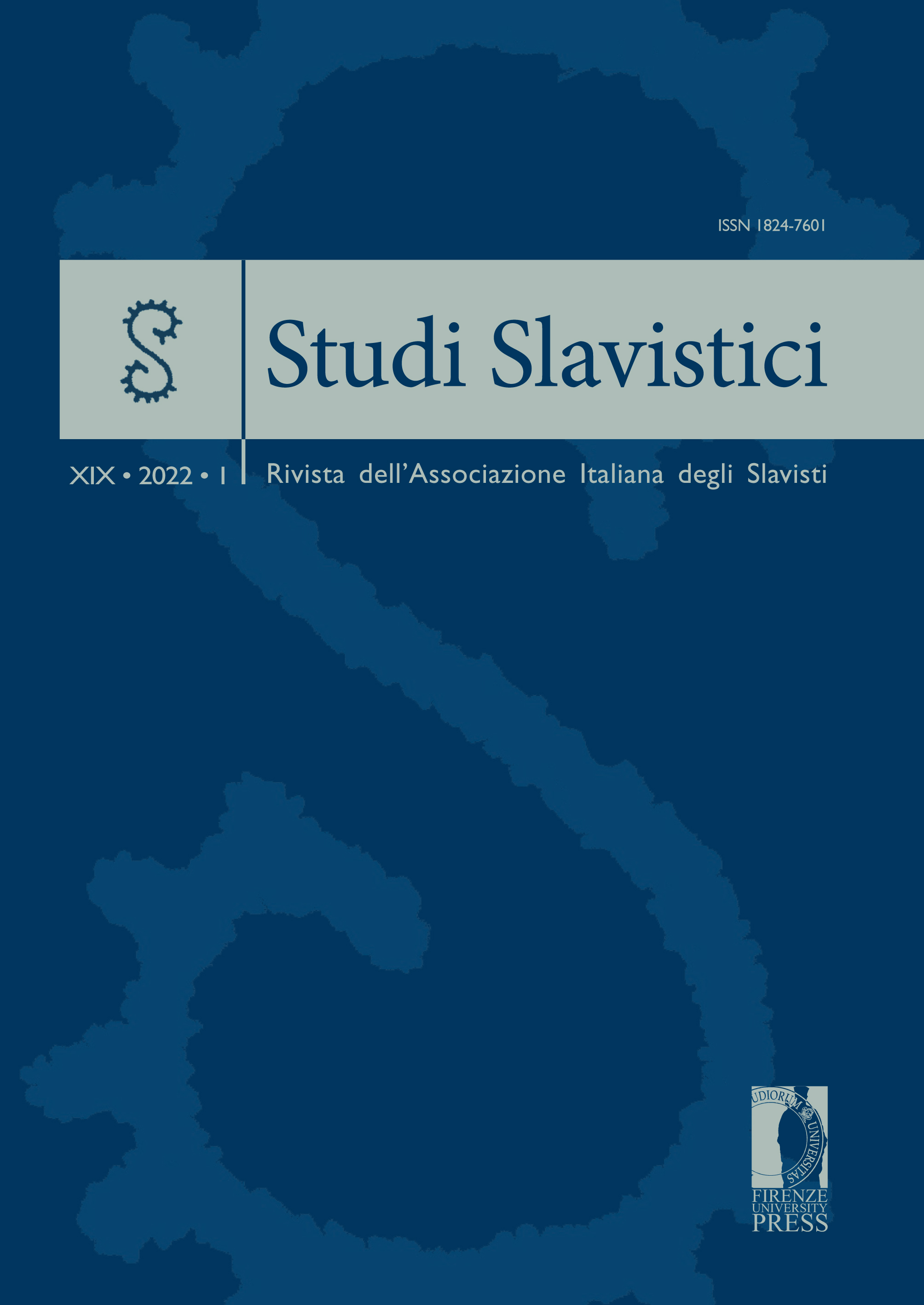RNB.Pogodin.11 and the Textual Tradition of Slavic Gospels. A Comparison of Textual and Lexical Variants
Published 2022-05-28
Keywords
- Church Slavonic Gospels,
- Greek Gospels,
- Byzantine Text,
- Lexicon,
- Linguistic Coat
Abstract
rnb.Pogodin.11 (P11) is an ancient East-Slavic Gospel lectionary (of the esk-type), for which various datings have been proposed, going back to the 11th century. This manuscript was given a prominent position in the 19th century editions of the Slavic version of the Gospels, as a witness of the ‘ancient’ redaction. Nevertheless, only in recent times has it become the object of extensive study. In the present paper, the text of P11 is preliminarily contextualized within the Slavic tradition, by use of the corpus of textual nodes, developed at the Münster Institute for New Testament Textual Research (<http://egora.uni-muenster.de/intf/>): the analysis shows that the text of this codex has few points of contact with the tradition of the feast (esk) lectionary, while it is very close to the text of the Mstislav Gospel (except for the Mark cycle). From a typological point of view (moderate increasing of particular variants at the expense of the so-called ‘Byzantine text’), P11 places itself between the ‘first redaction’ and the ‘second redaction’, i.e. between the ‘ancient text’ and the ‘Preslav text’. The influence of the latter is particularly evident in the John cycle, especially in the first folios of the manuscript. In comparison to the Mstislav Gospel, the text of P11 seems to be more innovative, but with a strongly archaic lexicon. It confirms that ‘text’ and ‘lexicon’ are independent layers within the Slavic Gospels textual tradition, and were already perceived as such by the copyists. Adopting the distinction between ‘form’ and ‘substance’ of a text used by Romance philologists, I propose to interpret the innovative lexical forms of the Mstislav Gospel as a ‘linguistic coat’ (patina linguistica), while P11, both from the textual and the lexical point of view, seems to be ‘formally’ a more archaic stage of the same ‘substance’ (the so-called ‘ancient text’ or ‘first redaction’).



